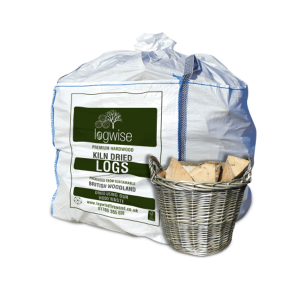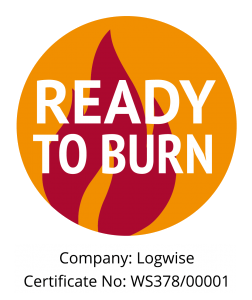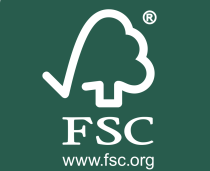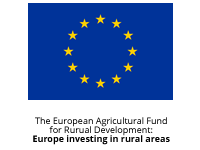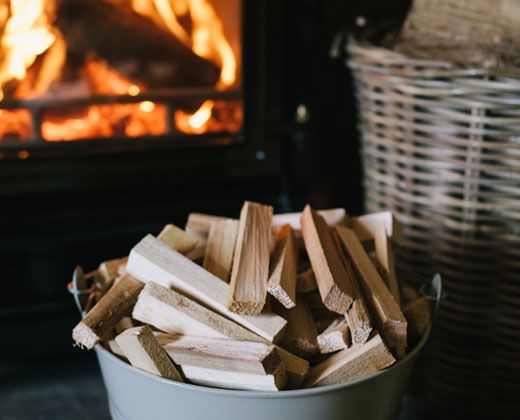
Which firewood is the best to burn?
We sell hardwood logs, kiln dried logs, and softwood logs. Here they are, in all their glory:
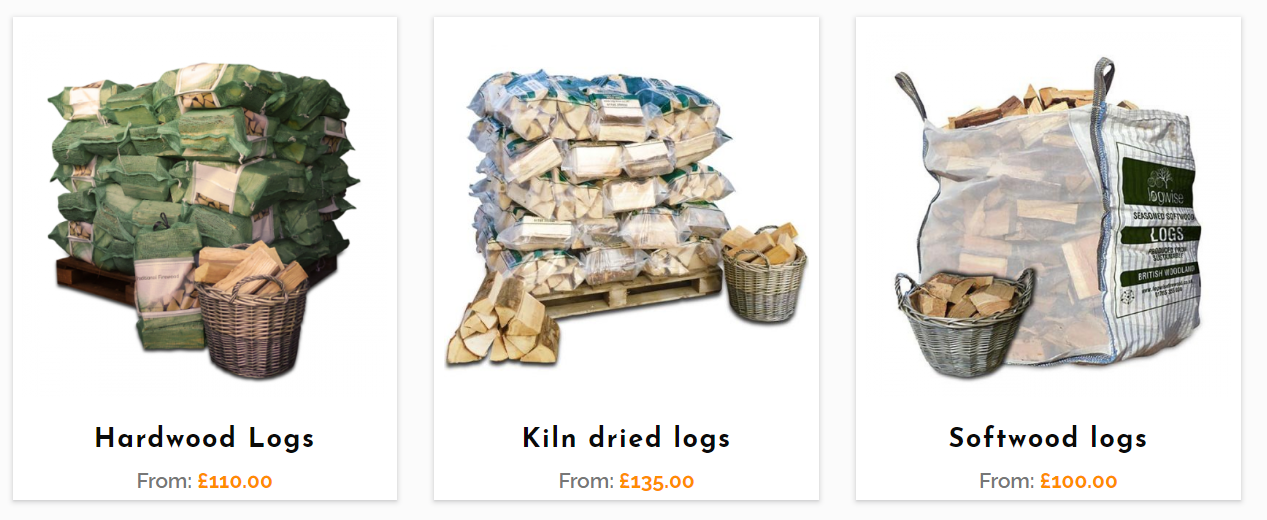
But maybe you’re wondering: what’s the difference between these types of firewood?
In another blog post, we give the technical definition: hardwood logs come from angiosperms – deciduous trees – which lose their leaves in winter and bloom again in spring. Softwood logs come from gymnosperms – evergreen trees – which keep their leaves year-round.
When it comes to buying firewood, though, things are a bit different.
Choosing the right firewood
Getting the wood that best suits your needs is a balance between two key factors. For a cosy and inviting fire, you want to make sure your timber has:
- A low enough moisture content to burn easily.
- A high enough density to burn for a long time, and to kick out the heat.
Because it’s easier to season (dry out) dense wood than to increase the density of dry wood, the best firewood is often considered to be oak, beech, or other similarly dense hardwoods that have been well seasoned.
We dry our kiln dried logs on-site, in a biomass oven powered by our wood waste. This process brings the moisture content to a very low level, meaning these logs are best suited to burn for a long time on established fires.

Lowering moisture content through seasoning makes firewood more efficient because more of the fire’s energy is spent burning wood (which generates heat) than evaporating water (which doesn’t).
Ash is a naturally dry timber with good density, making it good firewood. However, UK populations are under threat because of ash-dieback, so it is becoming less common.
Choosing the right kindling
Getting a fire going requires wood with different properties, and proper kindling is the secret to a good fire.
The wood used for your kindling needs to light easily and burn quick enough and hot enough for the logs around it to catch, and softwood is best suited to this purpose.
What happens if you choose the wrong firewood?
If you try to build a fire with soft timber like poplar or balsa, the logs will burn fast and won’t generate much heat. You’ll be spending a long time replenishing the fire, and you’ll get through a lot more wood than you need to.
(A side note to clarify some potential confusion: although poplar and balsa have properties that make them soft timbers, they are classified as hardwood because they come from deciduous trees.)
Building the perfect fire
We can boil down the information in the previous sections to two rules:
- A fast burn = more combustive = good for kindling.
- A slow burn = harder to light = good for an established fire.
We therefore recommend softwood kindling with less dense logs first (either softwood like larch, or a soft hardwood like birch or sycamore). Once the fire is established, whack on a dense wood like beech or oak to generate more heat.
Browse our best sellers
-
Kiln dried logs, shipping-dependent
From £155.00 Select options This product has multiple variants. The options may be chosen on the product page -
Kiln dried logs, shipping-dependent
From £155.00 Select options This product has multiple variants. The options may be chosen on the product page
-
From £5.00 Select options This product has multiple variants. The options may be chosen on the product page
-
Eco firelighters, Eco firelighters local, Logwise local
From £3.00 Select options This product has multiple variants. The options may be chosen on the product page

